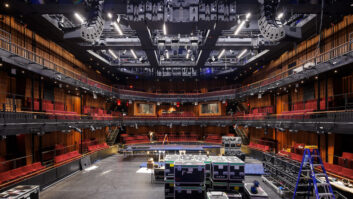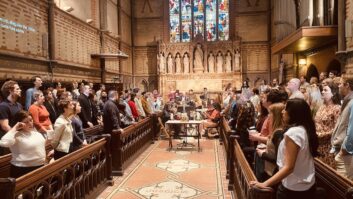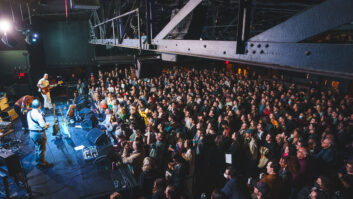Offering one-stop shopping to clients in the highly competitive New York advertising business has become critically important over the last decade or so. Production and post-production companies that have high-quality picture and audio services in-house stand a much greater chance of attracting and keeping clients than those who specialize, or so the logic goes.
Napoleon Inc., currently located in the Graybar Building – a midtown fixture since the gray flannel days – has been in business for more than 15 years, offering clients a range of services that includes storyboard, computer graphic, animatics, post-production editing and live action test work, as well as full-up production. Ten in-house artists operate out of Napoleon’s art studio, with more than 30 additional freelancers on call.
Early last year, Napoleon expanded its affiliate company roster, which includes Code Films Inc., Code FX, Napoleon Productions and Napoleon Art, by bringing on Mark Zampella to head Ultra-Sound, its new audio division. A 12-year veteran of the audio industry, Zampella carries the title of chief audio and sound design engineer, and the same easy, affable air that he brought to sessions a decade ago as an assistant engineer at Hip Pocket Studios.
A guitar player and engineer, Zampella has found in Napoleon a place to exercise all of his technical and artistic skills. “I run audio support for five video edit rooms,” he says. “Each spot requires something different. One will simply call for me to pull several effects from our extensive CD library collection. [Stock music and effects libraries are housed on a Pioneer 500-CD changer.] At other times, the client will want us to take the audio even further. I create a lot of sound effects, record Foley and often write music. The technology has really gotten to an amazing point. I’ve worked in great studios, with fantastic equipment, and when you’re making records, you need to have the best gear you can at every step of the way.”
“But you know what?” he asks. “I’ll often record Foley onto a portable, 44.1kHz, 16-bit MiniDisc recorder that costs me less than $300, using discs that cost about a buck a piece. They sound great! Once I’ve got the sounds I need, I’ll dump the tracks over to our Pro Tools 5.1 24 MIX Plus system digitally.
“I’ll also do some scoring – sweetening stock tracks or creating my own music from scratch – using the modest MIDI rig I have here,” he continues. “I’ve got an Alesis QS7.1 multitimbral synth running through an O2R. The board is wired into Pro Tools. After I’ve laid down some synth parts, I track my guitar and bass parts directly into Pro Tools. All of our rooms are networked into our Pro Tools system, so I simply send out the finished mixes to the desktop of whoever’s working on the spot. The audio gets loaded into an Avid or Smoke system. I avoid tape wherever possible, although some times I have to drop to Digi Beta.”
Zampella relies heavily on TDM plug-ins from Waves, Wave Mechanics, Focusrite, Antares and Digidesign, as well as his Genelec 1030A monitors with matching subwoofer. A MOTU MIDI TIme Piece A/V time-locks his system.
Looking to the future, Zampella says that Ultra-Sound is preparing for the day when cybercasting is a reality. “We’re trying to master the whole area of compression. I’ve done a couple of Web sites for friends, compressing both the video and audio into Quicktime and Real Audio files. We’ve got some radio station leads at this time. I believe that’s where the cybercasting of audio will begin, compressing radio station playlists. That kind of work is going on at the present time. As broadband and DSL lines become more widely used, the work will increase, and we want to be a part of it.
“We use Media Cleaner Pro for compression,” he explains. “It’s a software application that crushes things down to really small files so that you can make MPEG, Quicktime and Real Audio files. The cybercast part of the business hasn’t exploded yet, but we expect it to, and we’ll be ready when it takes off.”







